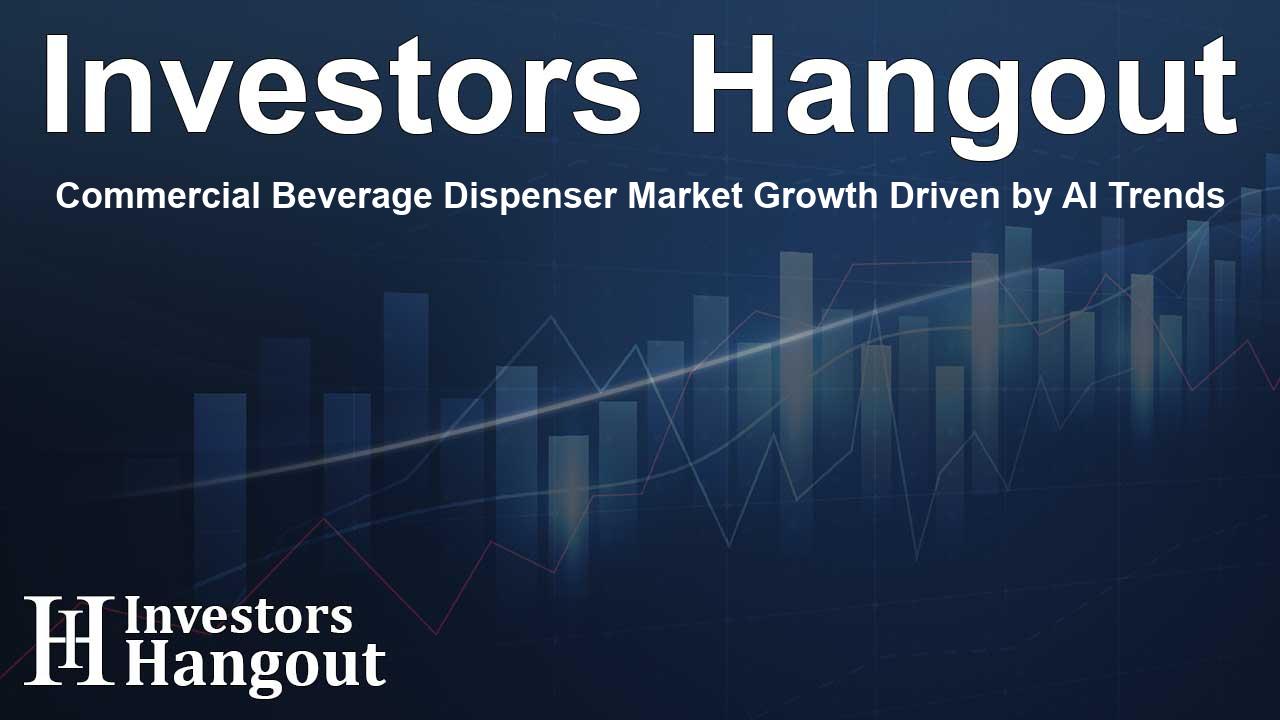Commercial Beverage Dispenser Market Growth Driven by AI Trends

Insights on the Commercial Beverage Dispensers Market
In the evolving landscape of the commercial beverage dispensers market, significant growth is anticipated, driven by advancements in technology and changing consumer preferences. This segment is expected to see remarkable expansion through innovative features and improved vendor engagement in the digital space, with market forecasts predicting a rise by USD 242.9 million from 2025 to 2029. The compound annual growth rate (CAGR) during this timeframe is estimated to be approximately 5.1%.
Key Drivers Behind Market Growth
The surge in online presence among beverage dispenser vendors has greatly influenced the demand for these products. As establishments like restaurants, cafes, and entertainment venues aim to enhance consumer experiences, they are increasingly investing in advanced dispensers integrated with cutting-edge technologies. A notable example is the introduction of dispensers featuring touchscreens and Bluetooth connectivity, allowing consumers to personalize their beverages while enjoying the convenience of mobile applications.
Shifts in Consumer Preferences
Today's consumers are more discerning, seeking beverage dispensers that can cater to their taste for customization and healthy options. There is a distinct trend towards natural teas and low-calorie drinks as customers become more health-conscious. Therefore, manufacturers are embracing recyclable materials, temperature control, and real-time monitoring capabilities to meet this demand. High-capacity models that serve a diverse range of products, from juices to cocktails, are particularly popular in various business segments, including hotels and convenience stores.
Market Challenges Ahead
Despite promising growth, the commercial beverage dispensers market faces significant challenges. One major hurdle is the long replacement cycle for these units. Given their durability, dispensers are typically used for extended periods, extending up to 30 years in some cases. This inherent longevity can hinder market growth as new sales can be infrequent. The need for ongoing maintenance remains essential to ensure functionality, but this minimal upkeep further contributes to the slower replacement cycle.
Adapting to Emerging Technologies
The landscape is evolving as start-ups and established businesses alike introduce automated features and IoT capabilities in their products. Modern dispensers come equipped with smart technology, providing users with seamless interactions and enhanced convenience. Furthermore, food safety remains a crucial factor, and ensuring hygiene with self-cleaning technologies is gaining traction among consumers.
Segment Overview and Market Insights
The commercial beverage dispenser market can be divided into several segments, including product type, material, and geography. Key product segments include:
- Product Types
- Refrigerated
- Uninsulated
- Insulated
- Materials Used
- Stainless Steel
- Glass and Acrylic
- Plastic
- Others
This segmentation allows for a more tailored approach to addressing the needs and expectations of diverse consumer bases across different regions, including Europe, APAC, North America, and South America.
Future Projections and Market Trends
A focus on environmentally friendly solutions and energy efficiency continues to gain momentum in the commercial beverage dispensers market. As businesses aim to reduce their carbon footprints, the adoption of eco-friendly materials and practices will likely shape the future of the industry. Additionally, trends such as touchless dispensing systems and smart connectivity features are expected to remain at the forefront of innovation in this sector, enhancing user experiences and operational efficiency.
Frequently Asked Questions
What is driving the growth of the commercial beverage dispensers market?
The growth is primarily driven by advancements in technology, increased vendor online presence, and changing consumer preferences toward customizable and health-conscious options.
What are the major challenges in the commercial beverage dispensers market?
The main challenges include long replacement cycles due to the durability of dispensers and the ongoing need for maintenance and hygiene standards.
Which materials are commonly used in commercial beverage dispensers?
Common materials include stainless steel, glass, acrylic, and plastic, with a shift towards more sustainable and recyclable materials.
What geographical regions are experiencing growth in this market?
The market is growing in various regions, particularly in Europe, APAC, North America, and South America, as businesses capitalize on emerging trends.
How is technology impacting the commercial beverage dispensers market?
Technology is transforming the market by introducing automated features, IoT capabilities, and touchless systems that enhance user convenience and streamline operations.
About The Author
Contact Dylan Bailey privately here. Or send an email with ATTN: Dylan Bailey as the subject to contact@investorshangout.com.
About Investors Hangout
Investors Hangout is a leading online stock forum for financial discussion and learning, offering a wide range of free tools and resources. It draws in traders of all levels, who exchange market knowledge, investigate trading tactics, and keep an eye on industry developments in real time. Featuring financial articles, stock message boards, quotes, charts, company profiles, and live news updates. Through cooperative learning and a wealth of informational resources, it helps users from novices creating their first portfolios to experts honing their techniques. Join Investors Hangout today: https://investorshangout.com/
The content of this article is based on factual, publicly available information and does not represent legal, financial, or investment advice. Investors Hangout does not offer financial advice, and the author is not a licensed financial advisor. Consult a qualified advisor before making any financial or investment decisions based on this article. This article should not be considered advice to purchase, sell, or hold any securities or other investments. If any of the material provided here is inaccurate, please contact us for corrections.
